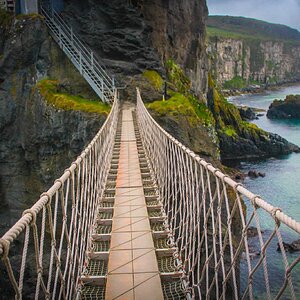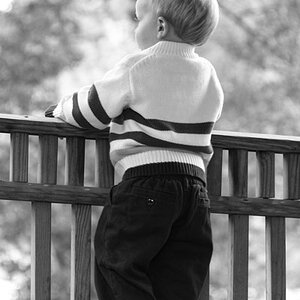Navigation
Install the app
How to install the app on iOS
Follow along with the video below to see how to install our site as a web app on your home screen.

Note: This feature currently requires accessing the site using the built-in Safari browser.
More options
You are using an out of date browser. It may not display this or other websites correctly.
You should upgrade or use an alternative browser.
You should upgrade or use an alternative browser.
Macro flash setup
- Thread starter vandervr
- Start date
- Joined
- Aug 15, 2013
- Messages
- 13,695
- Reaction score
- 3,369
- Location
- SE Michigan
- Can others edit my Photos
- Photos OK to edit
A Ring light I think would be the best for this all depending upon how close you expect to get. More info might help, do you have example images ?
BrentC
Been spending a lot of time on here!
- Joined
- Jan 8, 2017
- Messages
- 3,576
- Reaction score
- 2,336
- Location
- Brampton, Ontario
- Can others edit my Photos
- Photos NOT OK to edit
The diffuser is the key. Ring lights are hard to diffuse properly. If you already have a speedlight just try making your own diffuser (google macro home-made diffuser, lots of good stuff out there.) or get a cheap softbox for it. No need to spend a lot of money at first.
Here are some of my macros with my current setup , a speedlight on the camera with softbox. There is a few in there with natural light but most taken with the flash Macro.
I'll might move to a 2 flexible arm flashes in the future.


Here are some of my macros with my current setup , a speedlight on the camera with softbox. There is a few in there with natural light but most taken with the flash Macro.
I'll might move to a 2 flexible arm flashes in the future.
Attachments
- Joined
- May 1, 2008
- Messages
- 25,422
- Reaction score
- 5,003
- Location
- UK - England
- Website
- www.deviantart.com
- Can others edit my Photos
- Photos OK to edit
Actually we don't mind that, in the right context its fine so long as you're clearly not trying to steal members from the site. Otherwise its just information; heck I've directed people toward other forums when I've felt that their question/problem/needs could be better dealt with by a different community with a different focus/membership.
Also Google results are never always the same for each individual person; your search history and preference settings can change the results so the "first result" might well not be the same for everyone.
Macro lighting can be very cheap or very expensive depending on your needs and budget so here's a few thoughts;
1) Ring Flash - ringflashes are not a bad choice. They sit on the front of the lens and give you a nice even light from the front; good ones can vary the power of the left and right side so that you can introduce some shadowing so that the light isn't totally flat.
The main problems are that you can't diffuse the light very well/easily - remember that diffusion of light is done by making the light source bigger; with a ringflash you've not really got much room to work with before you're hitting the subject or obscuring the lens. So you've not got much room to modify this light source.
That brings us to the second aspect; its on the front of the lens so its stealing some of your working distance bonus; that of lowering the chances of spooking the subject.
Finally they are a very niche light source. You find that they are used for macro and nothing much else (there are ring-flashes for portraiture but they are a totally different type of flash and size altogether). So they are a good choice, but not always the best in all aspects.
2) BrentC's design of flash is your common approach used by many. It makes use of a speedlite unit (standard and thus can be used for almost any typo of photography) which can be from a huge variety from own-brand through to 3rd party.
You've got a softbox on the front that gives you your diffusion (thus softer light - less harsh shadows); and its all of a size that's practical for most macro work.
Lumiquest make a range of smaller softboxes or you can make your own or use a range of other manufacturer choices on the market.
Also Google results are never always the same for each individual person; your search history and preference settings can change the results so the "first result" might well not be the same for everyone.
Macro lighting can be very cheap or very expensive depending on your needs and budget so here's a few thoughts;
1) Ring Flash - ringflashes are not a bad choice. They sit on the front of the lens and give you a nice even light from the front; good ones can vary the power of the left and right side so that you can introduce some shadowing so that the light isn't totally flat.
The main problems are that you can't diffuse the light very well/easily - remember that diffusion of light is done by making the light source bigger; with a ringflash you've not really got much room to work with before you're hitting the subject or obscuring the lens. So you've not got much room to modify this light source.
That brings us to the second aspect; its on the front of the lens so its stealing some of your working distance bonus; that of lowering the chances of spooking the subject.
Finally they are a very niche light source. You find that they are used for macro and nothing much else (there are ring-flashes for portraiture but they are a totally different type of flash and size altogether). So they are a good choice, but not always the best in all aspects.
2) BrentC's design of flash is your common approach used by many. It makes use of a speedlite unit (standard and thus can be used for almost any typo of photography) which can be from a huge variety from own-brand through to 3rd party.
You've got a softbox on the front that gives you your diffusion (thus softer light - less harsh shadows); and its all of a size that's practical for most macro work.
Lumiquest make a range of smaller softboxes or you can make your own or use a range of other manufacturer choices on the market.
- Joined
- Aug 15, 2013
- Messages
- 13,695
- Reaction score
- 3,369
- Location
- SE Michigan
- Can others edit my Photos
- Photos OK to edit
Also keep in mind for #2 that your distance to subject can be a problem.Actually we don't mind that, in the right context its fine so long as you're clearly not trying to steal members from the site. Otherwise its just information; heck I've directed people toward other forums when I've felt that their question/problem/needs could be better dealt with by a different community with a different focus/membership.
Also Google results are never always the same for each individual person; your search history and preference settings can change the results so the "first result" might well not be the same for everyone.
Macro lighting can be very cheap or very expensive depending on your needs and budget so here's a few thoughts;
1) Ring Flash - ringflashes are not a bad choice. They sit on the front of the lens and give you a nice even light from the front; good ones can vary the power of the left and right side so that you can introduce some shadowing so that the light isn't totally flat.
The main problems are that you can't diffuse the light very well/easily - remember that diffusion of light is done by making the light source bigger; with a ringflash you've not really got much room to work with before you're hitting the subject or obscuring the lens. So you've not got much room to modify this light source.
That brings us to the second aspect; its on the front of the lens so its stealing some of your working distance bonus; that of lowering the chances of spooking the subject.
Finally they are a very niche light source. You find that they are used for macro and nothing much else (there are ring-flashes for portraiture but they are a totally different type of flash and size altogether). So they are a good choice, but not always the best in all aspects.
2) BrentC's design of flash is your common approach used by many. It makes use of a speedlite unit (standard and thus can be used for almost any typo of photography) which can be from a huge variety from own-brand through to 3rd party.
You've got a softbox on the front that gives you your diffusion (thus softer light - less harsh shadows); and its all of a size that's practical for most macro work.
Lumiquest make a range of smaller softboxes or you can make your own or use a range of other manufacturer choices on the market.
If you are shooting close then the lens becomes an obstacle to the light source and you can get a hard shadow. This is dependent upon the length of lens and total distance to subject.
I recommended the ring (or nikon makes a small twin flash variety as mentioned) because you don't get the lens being in the way for closer subject to lens distances.
#3 One thing I also do is I'll hold the flash with one hand and put it right next to my lens for proper lighting on closeup/macro shots. and you can use a diffuser, etc with that option too. And you can also use a flash bracket to get the speedlight higher up and can point down to get away from any lens shadow problems.
So you have many options all dependent upon how you plan on shooting.
fmw
No longer a newbie, moving up!
Lighting an insect is no different from lighting anything else. It is just closer with less illumination required. Use whatever you use for larger objects.
PhotoriousMe
No longer a newbie, moving up!
- Joined
- Sep 19, 2015
- Messages
- 500
- Reaction score
- 368
- Location
- Ontario
- Can others edit my Photos
- Photos OK to edit
My current setup is two flexible arms holding two Nikon SB-R200 flashes. Lots of flexibility and when paired with the Nikon SU-800 Commander I'm able to control the output of each flash separately.


benhasajeep
No longer a newbie, moving up!
- Joined
- May 4, 2006
- Messages
- 4,020
- Reaction score
- 497
I have a Nikon R1 kit with 2 extra SB-R200's. So, I can shoot with up to 4 of the lights (can also add other Nikon SB's if you wanted too. They use CLS to operate. I believe the on lens limit is 4 flashes when using the ring (the R1 kit ring that is).
I have an older ring light but can't use it on the new DSLR's. Still works though. I fire it off every 3 months just to keep the capacitors in shape. Been playing with film a little more. So it might just get some extra use.
I have an older ring light but can't use it on the new DSLR's. Still works though. I fire it off every 3 months just to keep the capacitors in shape. Been playing with film a little more. So it might just get some extra use.
Similar threads
- Replies
- 13
- Views
- 484

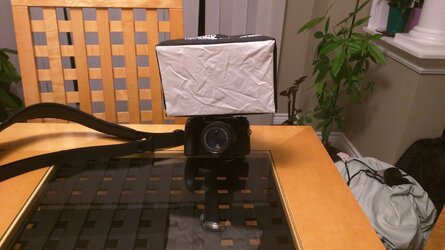

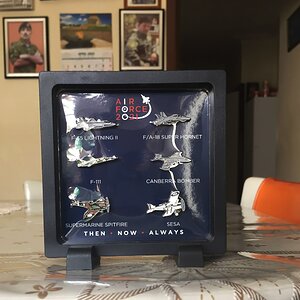
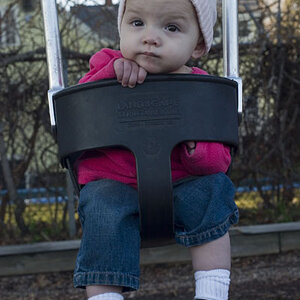
![[No title]](/data/xfmg/thumbnail/30/30890-45d8875af0c79f0f727d7d55132972b0.jpg?1619734501)

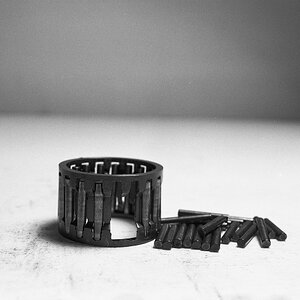
![[No title]](/data/xfmg/thumbnail/30/30888-e7fd3f6ad2e0d85268f086de6d796459.jpg?1619734499)

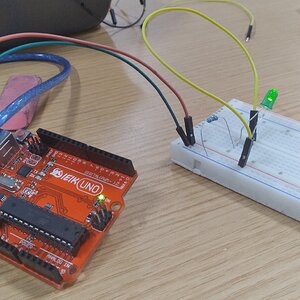
![[No title]](/data/xfmg/thumbnail/35/35865-5006be46d328277e5a956fa323782d97.jpg?1619737192)
